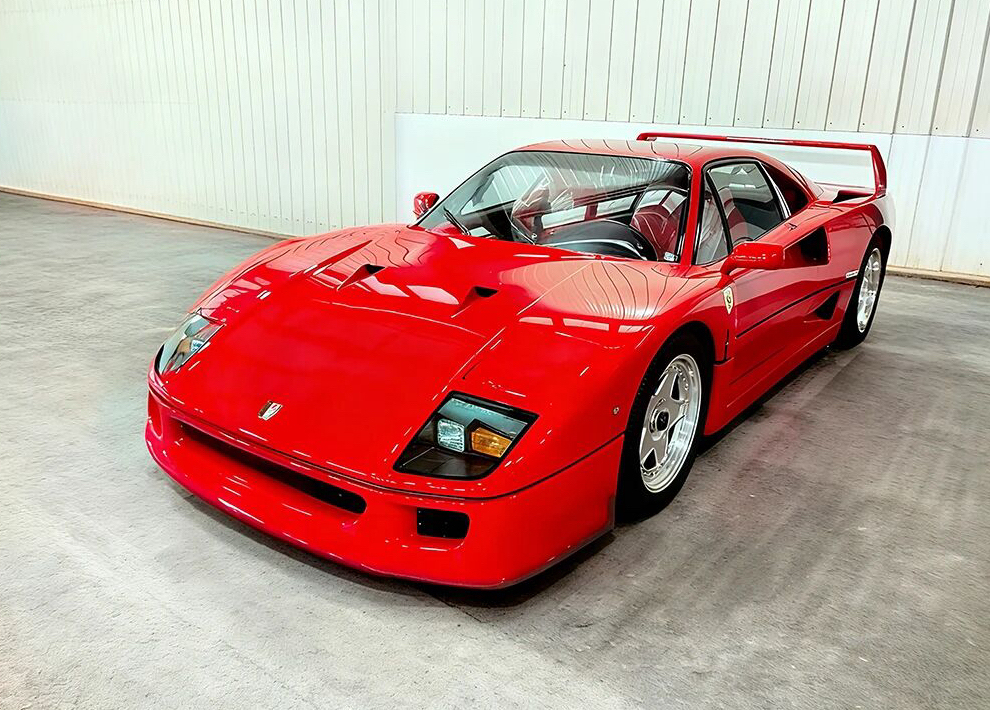
In just over 20 days, the 8th China International Import Expo will open in Shanghai.
On October 13, The Paper reported from the CIIE Administration that the 8th CIIE's Automotive and Smart Mobility Exhibition Area, in partnership with the Shanghai Jiading Comprehensive Bonded Zone, will create an International Automotive Culture Experience Zone in Hall 2.1 of the National Exhibition and Convention Center (Shanghai). This zone will showcase a variety of traditional classic cars (commonly known as "classic cars"). The CIIE Administration also teased several upcoming models.

Ferrari F40 All pictures in this article are provided by the CIIE Bureau
The Ferrari F40 was born in 1987. It was a milestone work for the brand's 40th anniversary and the last road sports car designed by Enzo Ferrari himself. It was the first time that Ferrari's mass-produced car had a top speed of over 320 km/h and accelerated from 0 to 100 km/h in just 3.8 seconds. A total of 1,311 units were produced worldwide.

Ferrari 250 GT Cabriolet
The Ferrari 250 GT Cabriolet is a classic convertible sports car produced by Ferrari from the late 1950s to the early 1960s. It is equipped with a 3.0-liter V12 engine and outputs 240 horsepower. It is a model of luxury GT sports cars at the time, combining racing pedigree with everyday practicality. Its production is very limited (only about 200 units were produced worldwide).

Ferrari 348Th
Launched in 1989, the Ferrari 348 was the brand's first sports car to feature a mid-mounted V8 engine and a longitudinal rear-wheel drive transmission, introducing Formula 1 technology into its class. Powered by a 3.4-liter naturally aspirated V8 engine producing approximately 300 horsepower, it was also Ferrari's first official model to enter the Chinese market.

Jaguar E-Type
The Jaguar E-Type is a classic sports car launched by British Jaguar in 1961. Its slender hood, round lights with glass lampshades and oval air intake grille together outline an elegant and dynamic streamlined body. It combines outstanding performance with a relatively affordable price, changing the market landscape of high-performance sports cars.

Rolls Royce Phantom I Boat Tail
The Rolls-Royce Phantom I Boat Tail, a bespoke bodywork model built on the chassis of the first-generation Phantom, was created during the Gilded Age of the late 1920s. Each one is hand-crafted by artisans, and is notable for its sloping back, resembling the stern of a yacht.

Rolls Royce 40/50 HP Phantom II
The Rolls-Royce Phantom II is a culmination of the automotive industry in the early 20th century. It is equipped with a 7.7-liter inline six-cylinder engine, and introduces a servo braking system and adjustable suspension, achieving a significant leap in power output and driving quality.

Lamboryhini Countach 25th Anniversary
The Lamborghini Countach 25th Anniversary Edition was launched in 1988 to celebrate the brand's 25th anniversary. While retaining the original wedge-shaped body and scissor doors, it further optimized the aerodynamic design, added huge front and rear bumpers, side skirts and air intakes, and became the ultimate icon of supercars in the 1980s.

Porsche 911S
The Porsche 911S was launched in 1966, equipped with a 2.0-liter horizontally opposed six-cylinder engine with a maximum power increased to 160 horsepower. It was also equipped with Focus lightweight aluminum alloy forged wheels for the first time, optimized braking system and suspension tuning, greatly improving the vehicle's handling agility and stability.

Porsche 944 Turbo
The Porsche 944 Turbo, a high-performance model launched by Porsche in 1985, was the first to be equipped with a transmission cooler. Its innovative "front engine + rear transmission" layout enabled a near-perfect 50:50 front-to-rear weight distribution, making it one of the most successful four-cylinder sports cars in Porsche's history.

Cooper T40
The Cooper T40 is a mid-engine formula racing car launched by the British Cooper Company in the 1950s. With a body weight of only 500 kg and equipped with a 2.0-liter inline six-cylinder engine, it has won many races, laid the technical standards for modern formula racing, and became an important pioneer of technological innovation in the history of racing.
